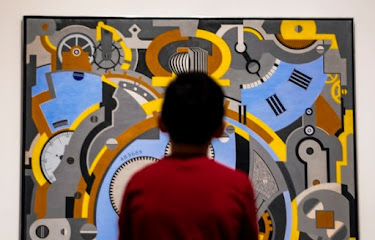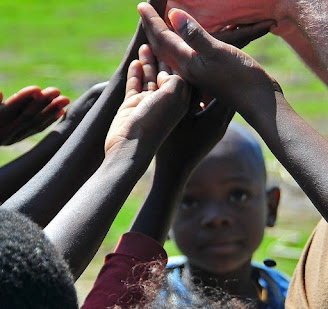Should We VTS in Preschool?—100% YES!
Do you consciously use visual thinking strategies (VTS) to understand new pieces of fine art? Do you use them to make sense of other images? VTS are often incorporated
into museum programs; visitors and researchers alike describe this meaning-making process as
an invigorating experience.
Cognitive psychologist, Abigail Housen and former MoMA director of education, Phillip Yenawine, originally developed VTS in 1991 to expand museum visitors' visual literacy skills. Today, VTS is used in elementary, middle, and high school classrooms across the country as a means of cultivating visual literacy and supporting comprehension. New research suggests VTS even builds preschool children’s visual literacy capacities and that it nurtures their oral language development (Yenawine, 2018)—a key contributor to reading success.
So, how can you get started using VTS with your students and/or children? The first step is to select an appropriate piece of artwork. Finding images that make good use of children’s background knowledge while simultaneously challenging them to dig deep for hidden meaning can be tricky. I highly recommend reading one of Yenawine’s
(2018;
2013)
books detailing the VTS method before implementing the approach; however, resources
are also readily available on the internet. Additionally, National Geographic
and The
New York Times regularly publish photos specifically intended for doing VTS with children. In my experience, some of these images work quite well with young learners, while others can be overly complex.
My go-to images for preschool children often come from
wordless picture books. Illustrations including those created by Bill Thomson,
Jerry
Pinkney, David
Wiesner, and Lizi
Boyd get children thinking and talking and keep them thinking and talking.
Once you have selected your image(s), it's best to memorize the three VTS discussion questions and/or have them at the ready. Consider rephrasing questions and/or posing them in students’ first language(s) to get the conversation going. The three basic questions (and a few variants you can try) are listed below:
1. What’s going on in this picture? What do you see
in this picture? What do you notice here?
2. What do you see that makes you say that? Why do
you say that? Tell me how you know?
3. What more can we find? Is there anything else?
There are a few important points to keep in mind when working with preschool students. First, they usually cannot and should not sit for long periods of time. Keeping discussions short (8-15 minutes) helps encourage developmentally-appropriate active VTS engagement. Second, be sure to paraphrase each child's noticing(s) without judgement, and connect related comments between children whenever possible. Third, young children should have the freedom to express themselves in ways that make sense to them. This includes walking up to the picture to point directly at an aspect of the work and/or using their first language to communicate their thinking. I have observed young children do a remarkable job of using their entire body to communicate their understandings—don’t be surprised if your young learners sing, dance, or draw the meaning they make from their VTS experience. Such efforts are to be appreciated, not discouraged.
For more information about VTS and or to become a trained
facilitator, go to https://vtshome.org/about/
.





Comments
Post a Comment